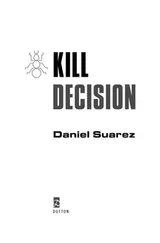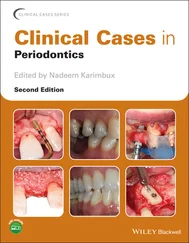1 ...7 8 9 11 12 13 ...33
Classifications of Periodontal Diseases and Conditions
Classification systems are essential to properly study the diagnosis, etiology, pathogenesis, and treatment of the different diseases. As such, the field of periodontology has witnessed the creation and continued update of different classification systems since the early 1940s. The first World Workshop in Periodontics 37was held in Ann Arbor, Michigan, on June 6 to 9, 1966, and the most recent World Workshop took place in Chicago on November 9 to 11, 2017, with the related publications released in June 2018. 38Understanding the development and the variations among the different classifications is critical for comprehending the literature published in different eras.
1989 WORLD WORKSHOP IN CLINICAL PERIODONTICS
One of the first major and comprehensive classifications of periodontitis emerged from the World Workshop in 1989. 37On this date, the World Workshop in Clinical Periodontics gathered scientists and researchers to develop a classification for periodontal diseases. There were essentially five different classifications, which are listed in Box 2-3. 37
BOX 2-3 Classification proposed in 1989 World Workshop in Clinical Periodontics 37
| Adult periodontitis (> 35 y)Early-onset periodontitis (≤ 35 y)Prepubertal periodontitis (< 13 y)GeneralizedLocalizedJuvenile periodontitis (13 to 26 y)GeneralizedLocalizedRapid progressive periodontitis (25 to 35 y)Periodontitis associated with systemic diseasesNecrotizing ulcerative periodontitisRefractory periodontitis |
Under the 1989 classification system, age of onset and distribution of lesions were taken into consideration for classifying adult periodontitis and early onset periodontitis as well as the subforms of early-onset periodontitis that included prepubertal periodontitis (generalized/localized), juvenile periodontitis (generalized/ localized), and rapidly progressive periodontitis. 37
1999 INTERNATIONAL WORKSHOP FOR A CLASSIFICATION OF PERIODONTAL DISEASES AND CONDITIONS
The 1989 classification raised problems in several areas 39:
Considerable overlap in disease categories
Absence of a gingival disease component
Inappropriate emphasis on age of onset of disease and rates of progression
Inadequate or unclear classification criteria
Therefore, the next landmark classification was the 1999 International Workshop for a Classification of Periodontal Diseases and Conditions, which addressed some of the problems in the previous classification. The major changes in the classification system for periodontal diseases included ( Box 2-4) 39:
BOX 2-4 Summary of 1999 International Workshop for a Classification of Periodontal Diseases and Conditions 39
| Gingival diseasesDental plaque–induced gingival diseasesGingivitis associated with dental plaque onlyGingival diseases modified by systemic factorsGingival diseases modified by medicationsGingival diseases modified by malnutritionNon-plaque-induced gingival lesionsGingival diseases of specific bacterial originGingival diseases of viral originGingival diseases of fungal originGingival lesions of genetic originGingival manifestations of systemic conditionsTraumatic lesions (factitious, iatrogenic, accidental)Foreign body reactionsNot otherwise specified (NOS)Chronic periodontitisLocalized (≤ 30% of sites involved)Generalized (> 30% of sites involved)Aggressive periodontitisLocalized (≤ 30% of sites involved)Generalized (> 30% of sites involved)Periodontitis as a manifestation of systemic diseasesAssociated with hematologic disordersAcquired neutropeniaLeukemiasOtherAssociated with genetic disordersFamilial and cyclic neutropeniaDown syndromeLeukocyte adhesion deficiency syndromesPapillon–Lefèvre syndromeChediak-Higashi syndromeHistiocytosis syndromesGlycogen storage diseaseInfantile genetic agranulocytosisCohen syndromeEhlers-Danlos syndrome (Types IV and VIII)HypophosphatasiaOtherNot otherwise specified (NOS)Necrotizing ulcerative periodontitis (NUP)Necrotizing periodontal diseasesNecrotizing ulcerative gingivitis (NUG)Necrotizing ulcerative periodontitis (NUP)Abscesses of the periodontiumGingival abscessPeriodontal abscessPericoronal abscessPeriodontitis associated with endodontic lesionsCombined periodontic-endodontic lesionsDevelopmental or acquired deformities and conditionsLocalized tooth-related factors that modify or predispose to plaque-induced gingival diseases/periodontitisTooth anatomical factorsDental restorations/appliancesRoot fracturesCervical root resorption and cemental tearsMucogingival deformities and conditions around teethGingival/soft tissue recessionLack of keratinized gingivaDecreased vestibular depthAberrant frenum/muscle positionGingival excessMucogingival deformities and conditions on edentulous ridgesVertical and/or horizontal ridge deficiencyLack of gingiva/keratinized tissueGingival/soft tissue enlargementAberrant frenum/muscle positionDecreased vestibular depthAbnormal colorOcclusal traumaPrimary occlusal traumaSecondary occlusal trauma |
Addition of a section on gingival diseases
Replacement of “Adult periodontitis” with “Chronic periodontitis”
Replacement of “Early-onset periodontitis” with “Aggressive periodontitis”
Elimination of a separate disease category for Refractory periodontitis
Clarification of the designation “Periodontitis as a manifestation of systemic diseases”
Replacement of “Necrotizing ulcerative periodontitis” with “Necrotizing periodontal diseases”
Addition of “Periodontal abscesses” category
Addition of “Periodontic-endodontic lesions” category
Addition of “Developmental or acquired deformities and conditions” category
2017 WORLD WORKSHOP ON THE CLASSIfiCATION OF PERIODONTAL AND PERI-IMPLANT DISEASES AND CONDITIONS
In order to update the 1999 classification of periodontal diseases and conditions, 39an organizing committee from the American Academy of Periodontology (AAP) and the European Federation of Periodontology (EFP) commissioned the world workshop that was held in Chicago on November 9 to 11, 2017. 38The world workshop included expert participants in the field of periodontology and implant dentistry from around the world. The scope of the 2017 world workshop was to align and update the classification scheme to the current understanding of periodontal and peri-implant diseases and conditions. Therefore, in addition to updating the 1999 classification of periodontal diseases and conditions, this was also the first world consensus to develop a classification scheme for peri-implant diseases and conditions. 38
A brief classification scheme for the 2017 world workshop is presented in Box 2-5, 38and major changes to the 1999 classification include the following 40:
BOX 2-5 2017 World Workshop on the Classification of Periodontal and Peri-implant Diseases and Conditions 38
| Periodontal health, gingival diseases/conditionsPeriodontal health and gingival healthClinical gingival health on an intact periodontiumClinical gingival health on a reduced periodontiumStable periodontitis patientNon-periodontitis patientGingivitis: Dental biofilm–inducedAssociated with dental biofilm aloneMeditated by systemic or local risk factorsDrug-influenced gingival enlargementGingival diseases: Non-dental-biofilm-inducedGenetic/developmental disordersSpecific infectionsInflammatory and immune conditionsReactive processesNeoplasmsEndocrine, nutritional, and metabolic diseasesTraumatic lesionsGingiva pigmentationForms of periodontitisNecrotizing periodontal diseasesNecrotizing gingivitisNecrotizing periodontitisNecrotizing stomatitisPeriodontitis as manifestation of systemic diseasesPeriodontitisStages: Based on severity and complexity of managementStage I: Initial periodontitisStage II: Moderate periodontitisStage III: Severe periodontitis with potential for additional tooth lossStage IV: Severe periodontitis with potential for loss of the dentitionExtent and distribution: Localized (< 30% teeth); generalized (≥ 30% teeth); molar-incisor distributionGrades: Evidence of risk of rapid progression, anticipated treatmentGrade A: Slow rate of progressionGrade B: Moderate rate of progressionGrade C: Rapid rate of progressionPeriodontal manifestation of systemic diseases and developmental and acquired conditionsSystemic diseases or conditions affecting the periodontal supporting tissuesOther periodontal conditionsPeriodontal abscessesEndodontic-periodontic lesionsMucogingival deformities and conditions around teethGingival biotypeGingival/soft tissue recessionLack of gingivaDecreased vestibular depthAberrant frenum/muscle positionGingival excessAbnormal colorCondition of the exposed root surfaceTraumatic occlusal forcesPrimary occlusal traumaSecondary occlusal traumaOrthodontic forcesProsthesis- and tooth-related factors that modify or predispose to plaque-induced gingival diseases/periodontitisLocalized tooth-related factorsLocalized dental prosthesis–related factorsPeri-implant diseases and conditionsPeri-implant healthPeri-implant mucositisPeri-implantitisPeri-implant soft and hard tissue deficiencies |
The 2017 workshop characterized periodontal health and gingival inflammation in a reduced periodontium after completion of successful treatment of a patient with periodontitis.
Читать дальше












